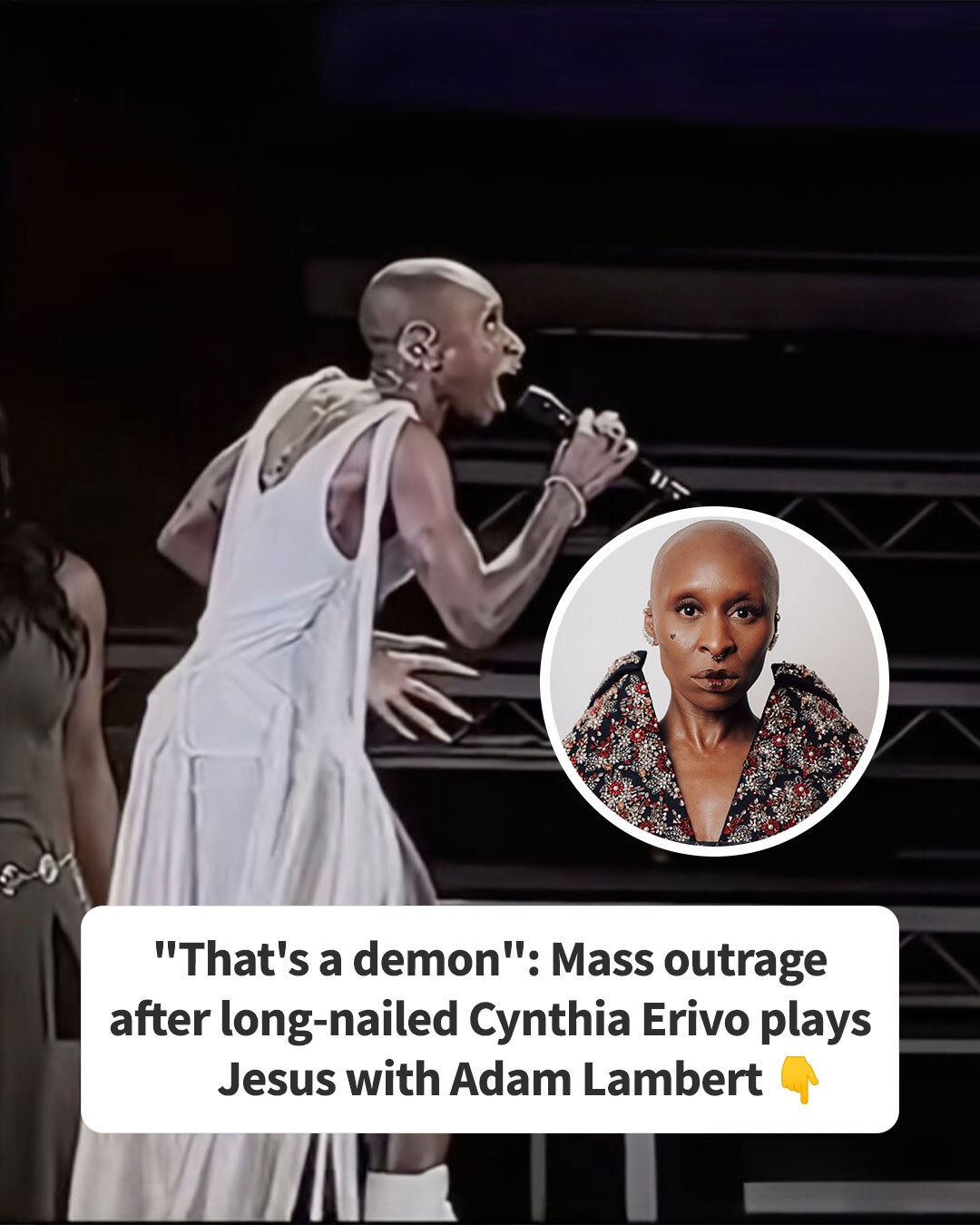Cynthia Erivo’s casting as Jesus Christ in the Hollywood Bowl’s production of Jesus Christ Superstar has transformed from a polarizing announcement into a firestorm of controversy after footage from her August 1–3 performance went viral over the weekend. In the clips, Erivo appears in a distressed white dress with claw-like acrylic nails, performing opposite Adam Lambert in what the Bowl promoted as a “return to the rock roots” of the classic musical.

Instead of being celebrated as a fresh take, the production was met with fierce backlash, with many online calling it an elitist Hollywood provocation rather than a revival of a beloved show. Social media users reacted strongly to Erivo’s stage presence, describing it as “eerie,” “frightening,” and “unholy,” with one bluntly declaring, “That is a f***ing demon.” The combination of her shaved head, jewelry, gaunt features, and exaggerated nails struck a nerve, leading some to compare the look to a horror character rather than a sacred figure. The staging, directed by Sergio Trujillo with music direction by Stephen Oremus, featured fiery backdrops, dramatic lighting, and a blurred line between Erivo as herself and the character of Jesus—a choice critics argued undermined the spiritual core of the musical.
Tickets for the show ranged from $400 to $1,270, adding to complaints that the production catered to an elite audience. Ever since her casting was announced in February, detractors argued that selecting a high-profile actress to portray the Son of God was less about creative innovation and more about delivering a pointed political statement. Comments questioned the intended audience, with some pointing to perceived double standards in the entertainment industry, suggesting that openly mocking a religion is tolerated while other forms of cultural insensitivity spark outrage.
Some critics framed the casting as a politically charged stunt, arguing that if the roles were reversed, it would be condemned as cultural and gender appropriation. Others focused on Erivo’s appearance, linking it to what they see as a broader entertainment and fashion industry trend toward androgyny and a rejection of traditional femininity.
Erivo’s offstage reputation also played into the criticism. While acclaimed for her talent in productions such as Disney’s Wicked, she has faced backlash over reports of dismissive behavior toward fellow auditioners and testy reactions to fan-made edits, fueling perceptions of her as elitist and self-victimizing. For critics, her decision to embody Jesus—a figure revered as the epitome of humility—felt like an intentional act to provoke outrage.
Some longtime fans of the musical lamented that their favorite show had been “ruined,” accusing the creative team of injecting politics into every aspect of the production. This was not Erivo’s first encounter with Jesus Christ Superstar. In 2020, she played Mary Magdalene in an all-female version of the musical, with singer Morgan James portraying Jesus, a project that was marketed as a celebration of female artistry. The role of Jesus itself has been reimagined before; John Legend notably played the part in NBC’s 2018 live broadcast. Erivo has drawn parallels between her portrayal of Jesus and her role as Elphaba in Wicked, framing both as characters who embody the struggles of being an outsider.
She has described Elphaba’s green skin as a metaphor for queerness and societal alienation, and connected this to conversations about racism, identity, and inclusion. Supporters of Erivo’s casting view her interpretation as a bold statement on representation and the universality of feeling “othered,” while opponents see it as confirmation that the choice was politically motivated rather than grounded in the story’s original intent.
Adam Lambert’s turn as Judas brought his own distinctive flair, but his performance did little to dampen the uproar over Erivo’s role. Many saw the Hollywood Bowl run as symbolic of an entertainment industry that, in their eyes, has become increasingly disconnected from the values and expectations of its audience. The debate surrounding Erivo’s performance has quickly made it one of the most talked-about theater events of the year, not solely because of its artistic choices but because of what it reveals about deep cultural divides over religion, representation, and the limits of creative reinterpretation.
Whether considered a daring reinvention or an unnecessary provocation, the production has achieved what art often does best—provoking intense discussion and reflection on the boundaries between tradition, innovation, and audience acceptance.





